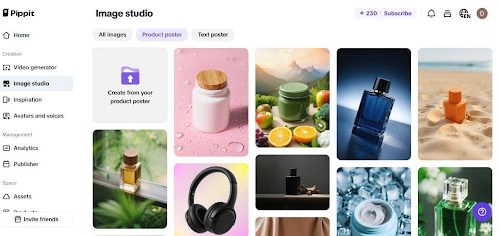
Dispatcher’s Cheat Sheet to Create a Better Workflow and Help With Driver Retention
For many years, the transportation industry which continues driver shortage has created substantial difficulties for businesses, shippers, and the economy in general. The aging of the present driver workforce, along with the need for younger drivers to work after them, is one of the most significant factors contributing to the shortage. Furthermore, low salaries and long hours with almost no rest have resulted in a high turnover rate, causing many drivers to look for other jobs.
However, it’s possible to solve this problem differently. One of the main ways to overcome this obstacle is to improve relationships between dispatchers and drivers of service, and FleetCare makes this process easier. That’s how a freight company can do this.
Tips to Improve the Driver-dispatcher Relationship
In most cases, a driver and dispatcher have different backgrounds, which might lead to contradictory perspectives on the way everything must operate in the trucking business. That’s why dispatchers should learn more about the way drivers work to help them feel more comfortable while completing their duties.
Go for a Ride
The first step dispatchers should do is to get into the truck driver’s shoes. Driving isn’t just a process when one needs to get to a particular destination. However, sometimes even experienced dispatchers believe that it’s the only thing drivers do during the entire workday.
That’s why if dispatchers want to properly manage drivers, they must grasp those factors. During the onboarding process, ask dispatchers to get in the vehicle with drivers.
A better grasp of road reality will cause better-planned, more realistic routes and boost empathy for the driver.
Get to Know Your Drivers
There’s one fact everyone knows and should follow, especially if they want to increase retention rates: people want to work with colleagues they know. So, professional dispatchers try to get to know the drivers they work with. They often learn about their interests and professional goals and try to memorize all the details.
Due to this, working interactions are improved. What’s more, it helps drivers understand that their dispatchers regard them as real people with their problems and interests.
Accept and Implement Feedback
Dispatchers have to provide feedback when they notice that drivers make mistakes. However, this rule works both ways. While being on the road, drivers also can see some significant nuances, changing which will help enhance their future work.
So, dispatchers should be careful and never forget to ask drivers if they have problems with something or want to work on some factors. Often even the smallest changes can become life-changing for those who drive trucks, making them keep working for a longer time.
Don’t Put Drivers in “Mission Impossible” Situations
Being a driver is hard, and dispatchers should always keep this in mind. While working, drivers have to deal with:
- gas pollution;
- dust pollution;
- noise;
- vibration.
These factors inevitably result in pain in the back, arms, legs, heart pain, and palpitations. At the end of the working day, there is fatigue and irritability. All this can happen, even if a driver works in a comfortable car for an appropriate number of hours.
That’s why dispatchers should plan all the routes carefully and never ask drivers to complete challenging tasks that only people with superpowers can handle. It will help avoid negative consequences and protect drivers from burning out just after a few months.
More Tips to Improve the Driver-dispatcher Relationship
However, better relationships aren’t the only way to increase driver retention rates. It’s also possible to boost it with modern tech solutions.
Use Real-time GPS Tracking to Minimize Phone Calls
When dispatchers need to inform consumers of the time their parcels should arrive, they frequently call drivers. This distracts drivers, and sometimes it can cause some problems on the road. Dispatchers may view exact positions and understand when particular vehicles deliver their goods at any time by employing real-time GPS tracking software. There is no need to make any phone calls during the freight.
However, introducing GPS tracking systems has many more benefits for these employees and the company as a whole. It also reduces fuel consumption and the depreciation of cars.
Many managers are familiar with the situation when money allocated for the functioning of the company runs away through the fingers. Often the reason is fuel consumption. Businesses may save up to 25% of fuel if the GPS for controlling fuel consumption is implemented. Due to it, dispatchers will receive up-to-date information about the mileage of each vehicle, number of stops, and refueling, as well as correspondence of the traveled route to the set one. As a result, the downtime of vehicles will decrease and their turnover will increase.
GPS monitoring results depend on the conscience of a particular driver. In this case, the GPS tracker can act both as an advocate and as a witness. Depending on the situation, everything is recorded in the history log and can serve as both accusatory and exculpatory information, which improves the discipline of drivers and creates a trusting environment in the company.
Dispatch Loads and Communicate Through an ELD
Many dispatchers communicate via phone calls, messages, and emails. It often takes a lot of time, and it’s uncomfortable for drivers because it’s hard to absorb significant information while on the road.
However, due to an ELD, drivers will always have comprehensive and correct information at their fingertips. Furthermore, by simplifying any back-and-forth contact using an ELD’s built-in messaging app, dispatchers and drivers may interact freely, regardless of their location.
Security of data transfer through an ELD is provided by end-to-end encryption of calls and messages and secure cryptographic algorithms. So, third parties will never be able to access private information about deliveries and routes.
While entering a general mailing app, users see banner ads and receive spam messages. All these factors distract them from their work. An ELD will become a reliable barrier against any kind of spam: intrusive advertising, disturbing news, or entertainment content. Employees will concentrate only on work moments, which will increase their productivity.
Proactively Plan for and Avoid Excess Detention Time
If dispatchers consider the efficiency of transportation, it will save money and help drivers deliver parcels faster in the following months. It’s important that analytical reports are comprehensive, include all factors, and are done quickly. For this purpose, expert dispatchers use special software that allows them to collect information about transportation and present it in an easy-to-understand form, such as a table or a graph.
Due to such tools, it’s possible to:
- reduce load with extended projected retention durations;
- know when to set detention time limits;
- plan when drivers should stop the next time.
In case of detention, dispatchers quickly find out how much time particular drivers spent at a facility and know how to avoid it next time.


























